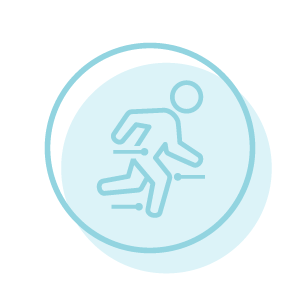What is a meniscal injury?
The meniscus is a crescentic-shaped fibrocartilaginous structure which sits inside the knee joint. It has a number of functions, the main function being to dissipate axial loads into hoop stresses (shock absorber of the knee). Other functions include providing stability to the knee, nutrition to the joint along with proprioception. Injury to the meniscus can occur from a broad range of activities ranging from relatively low-velocity twisting mechanisms through to more high-velocity sporting injuries.
What can cause it?
Injury to the meniscus can occur from a broad range of activities ranging from relatively low-velocity twisting mechanisms through to more high-velocity sporting injuries. Often there is instantaneous pain and the classic description is associated delayed onset of swelling (hours after the injury).

What are the symptoms and signs?
Patients often describe mechanical knee symptoms. This can involve ongoing pain in and around the site of the injury, locking and inability to fully extend the knee and inability to fully flex the knee, along with instability. There is a number of described tests and examinations in the literature:
In the office, asking a patient to fully crouch from a standing position to see if the pain is reproduced is often a relatively reliable way to make the diagnosis.

Can the problem get worse?
Sometimes degenerate type of tears can spontaneously resolve. Non-degenerative tears often continue to cause intermittent mechanical symptoms.
What investigations may be required?
MRI scan is the gold standard investigation.
Non-surgical management
It is often very difficult to predict the natural history of the condition. Often with the degenerative type of tears, there may be some merit in watching and waiting to see whether symptoms can resolve.
Surgical treatment
In the younger, symptomatic, non-degenerative type of tears, keyhole knee surgery is invariably required. Also in such cases, earlier interventions increase the likelihood of success when performing meniscal repairs since the freshly torn tissue is always more biologically more active.
In chronic tears or patients who present later, it is always well worth considering non-operative options prior to proceeding to keyhole knee surgery and partial meniscectomy (trimming of the torn segment).
Click here for more information on knee arthroscopy surgery.

Differential diagnosis
- ACL rupture
- Patella fracture
- Patella dislocation
- Patella tendon rupture
- Osteochondral defect
- Chondromalacia patellae
- Fat pad impingement
- Housemaids knee
- Iliotibial band syndrome
- Patella tendonitis (jumper’s knee)
- Medial collateral ligament sprain/rupture
- Osteoarthritis
- Pes anserine bursitis
- Popliteal cyst
- Posterolateral corner injury
- Quadriceps tendinopathy
- Quadriceps tendon rupture
- Plica syndrome
- Tibial plateau fracture
- Biceps femoris tendinopathy

Postoperative period & recovery
Following a partial meniscectomy (trimming) one can fully weight bear. Physiotherapy and rehab is often quite rapid i.e. within weeks.
Following a repair, one is normally on crutches for a six-week period alone with a brace which limits flexion to 90 degrees.
FAQs
Failure of meniscal repair, infection, residual symptoms, nerve damage, swelling, clots
